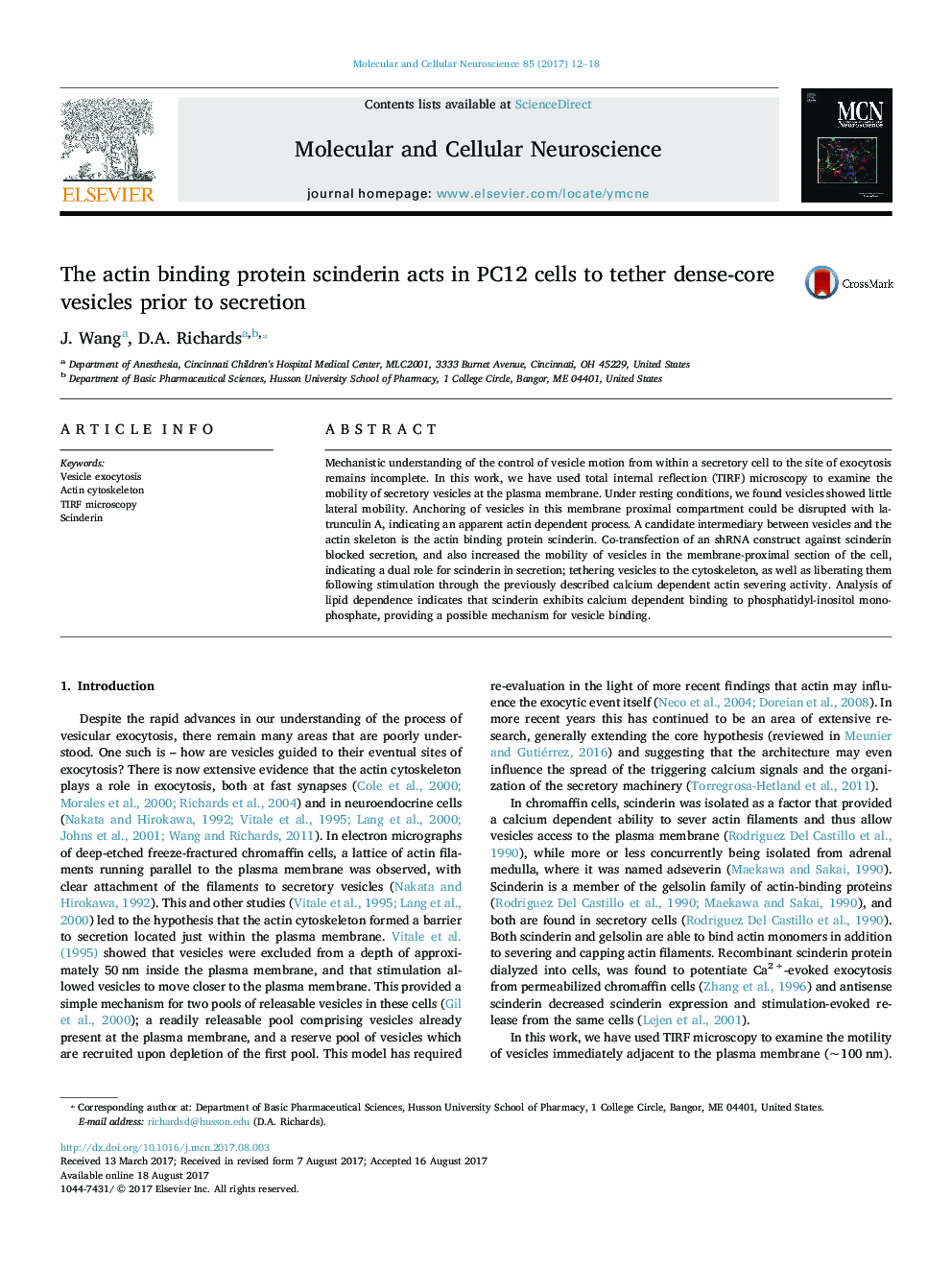| Article ID | Journal | Published Year | Pages | File Type |
|---|---|---|---|---|
| 5534413 | Molecular and Cellular Neuroscience | 2017 | 7 Pages |
â¢Scinderin is required for dense-core vesicle exocytosis in PC12 cells.â¢In resting cells, scinderin acts to prevent vesicle motion.â¢Scinderin exhibits bell-shaped dependence of calcium binding to mono-phosphorylated forms of phosphatidyl inositol.â¢Loss of lipid binding domains prevents scinderin's function in secretion.
Mechanistic understanding of the control of vesicle motion from within a secretory cell to the site of exocytosis remains incomplete. In this work, we have used total internal reflection (TIRF) microscopy to examine the mobility of secretory vesicles at the plasma membrane. Under resting conditions, we found vesicles showed little lateral mobility. Anchoring of vesicles in this membrane proximal compartment could be disrupted with latrunculin A, indicating an apparent actin dependent process. A candidate intermediary between vesicles and the actin skeleton is the actin binding protein scinderin. Co-transfection of an shRNA construct against scinderin blocked secretion, and also increased the mobility of vesicles in the membrane-proximal section of the cell, indicating a dual role for scinderin in secretion; tethering vesicles to the cytoskeleton, as well as liberating them following stimulation through the previously described calcium dependent actin severing activity. Analysis of lipid dependence indicates that scinderin exhibits calcium dependent binding to phosphatidyl-inositol monophosphate, providing a possible mechanism for vesicle binding.
